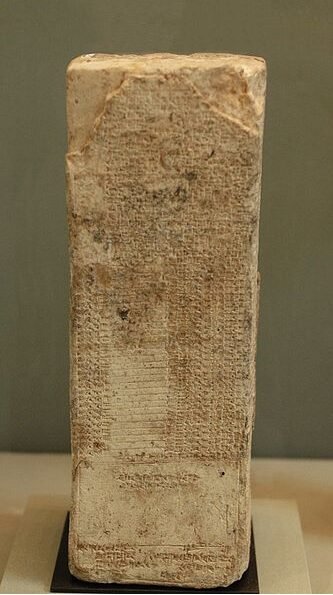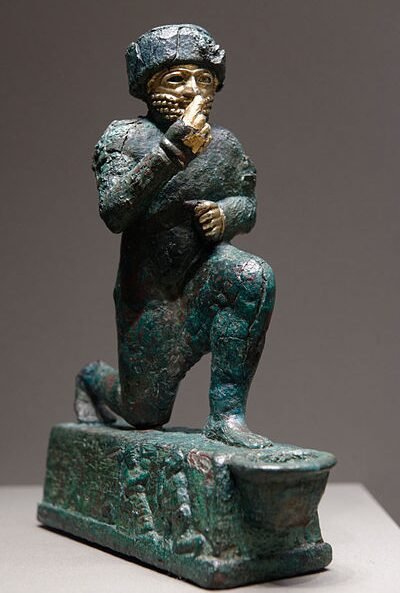Larsa: Ancient Sumerian City-State
Larsa is known in Sumerian as UD.UNUGKI and referred to as Larancha or Laranchon by the Greek historian Berossos. This ancient Sumerian city-state is located approximately 24 kilometers southeast of Uruk in Iraq’s Dhi Qar Governorate, near the Shatt-en-Nil canal. It’s been said that the city was centered around the cult of the sun god Utu. The city’s prominent temple, E-babbar, served as the primary religious site. Today, its remains are identified with the modern settlement of Tell as-Senkereh.
Cultural and Mathematical Contributions
Larsa is historically significant as the origin of numerous Babylonian mathematical tablets, including the famed Plimpton 322, which illustrates Pythagorean triples. This contribution highlights Larsa’s role in advancing early mathematics and cuneiform scholarship.
Larsa appears in Proto-cuneiform lexical lists from the Uruk 4 period (late 4th millennium BC). Excavations have revealed clay tokens and tablets from the Neolithic era, suggesting its importance as an early settlement.
By the Early Dynastic Period (circa 2500–2400 BC), Larsa had become a significant cult site dedicated to Utu. Rulers like Eannatum and Entemena of Lagash integrated Larsa into their realms, reflecting its importance in regional politics and religion.
The city is also referenced in hymns and inscriptions from the Akkadian Empire, including texts attributed to Enheduanna, daughter of Sargon of Akkad, which extol the divine presence of Utu in Larsa.

A map of Iraq, showing Larsa (in red).
Ur III Period (Late 3rd Millennium BC)
During the Ur III empire, rulers such as Ur-Nammu focused on rebuilding and enhancing Larsa’s religious infrastructure. The E-babbar temple—a focal point for Utu worship—was restored, cementing the city’s religious significance.
After the fall of the Third Dynasty of Ur around 2004 BC, Larsa emerged as a significant power during the Isin-Larsa period. Initially under the control of the city of Isin, Larsa gained independence under Gungunum, an Amorite governor who established a ruling dynasty and captured key cities like Ur. This marked Larsa’s ascendance as a political and economic center, controlling lucrative trade routes via the Persian Gulf.
Subsequent rulers, including Abisare and Sumuel, expanded Larsa’s influence by severing Isin’s access to critical canals, effectively diminishing its rival’s power. During its peak under Rim-Sin I (circa 1822–1763 BC), Larsa governed 10 to 15 city-states and undertook significant building projects, although its territorial control remained relatively modest.
Larsa’s prominence waned after its defeat by Hammurabi of Babylon. Although it became a minor site, it has been suggested that Larsa was linked to the First Sealand Dynasty, maintaining some historical relevance.

A monument at the Louvre showing a list of Larsa kings.
During the Neo-Babylonian and Achaemenid periods, Larsa remained active. Building inscriptions and cuneiform texts from this time attest to the continued use of the E-babbar temple. However, the temple was destroyed by fire in the 2nd century BC, and the city was abandoned entirely by the 1st century BC.
Larsa’s rulers are documented primarily from the Isin-Larsa period. Key figures include:
- Gungunum: Gained independence from Isin and expanded Larsa’s influence.
- Rim-Sin I: Presided over Larsa’s peak before being defeated by Hammurabi.
- Rim-Sin II: Attempted to revive Larsa’s fortunes but failed against Babylon.
These rulers’ reigns illustrate the city’s shifting fortunes as a regional power.
The site of Larsa was first excavated in 1850 by William Loftus, who identified its connection to the ancient city based on inscribed bricks from the Neo-Babylonian king Nebuchadnezzar II. Subsequent efforts by Walter Andrae and Edgar James Banks revealed widespread looting.
André Parrot conducted the first modern excavations in 1933, focusing on the E-babbar temple. His work continued sporadically until 1967. Jean-Claude Margueron and J-L. Huot led excavations between 1969 and 1991, uncovering structures and inscriptions from various periods, including the Kassite and Neo-Babylonian eras.
Recent Developments
In 2019, excavations resumed with advanced methodologies, including drone surveys and magnetometry. Recent findings have illuminated Larsa’s internal canal systems, port infrastructure, and city walls, offering new insights into its urban planning and trade networks. Artifacts such as cuneiform tablets from the reigns of Gungunum and Abisare further enrich our understanding of its history.
READ ALSO: Sumerian Pantheon: Most Famous Gods and Goddesses
Frequently Asked Questions



























